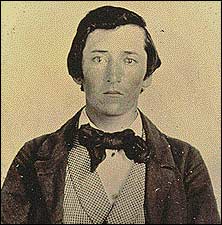About The Book: The well-worn rut most of us live in is safe, comfortable . . . some would call it dead. By contrast, coming alive requires willingness to journey into the unknown. Following Jesus is just such a path, one that takes us deep into His death and then lifts us up into His resurrection. There are some risks involved, and there is no point A to point B map. But there are landmarks—places we must pass along the way if we are to keep following Christ into real life. Landmarks explores these breakthrough places of the heart and mind. Experienced teacher and author Bill Delvaux shares his relatable landmark story and takes read- ers through nine different spiritual markers that must be encountered in order to live the full life Jesus has planned for us. Some of the landmarks include entering God’s story, letting go of idols, grasping your identity, awakening to the battle, bonding with Christ, and finding your quest in life. Join the journey. If you feel stuck out there on the highway of humanity and need tried and true spiritual direction, look for Landmarks.
About The Author: After studying at Duke University and Trinity Evangelical Divinity School, Bill was involved for 8 years in pastoral ministry as a youth minister and church planter. That period brought much difficulty and darkness ending in a failed church plant. Next, despite initial objections, he took a job in 1992 teaching Bible at Christ Presbyterian Academy in Nashville, TN and eventually became the Bible Department Chairman. During that time, he also began coaching track and cross country as the Varsity Head Coach. Here he found his quest for the next 20 years: connecting the truths of the Bible into the aching hearts of high school students. As he went on in the quest, he found those same truths connecting to his heart in surprising ways. Along with teaching and coaching, he began working with many fatherless young men, mentoring them in structured and informal ways. That eventually led into working with fathers and sons and finally into working with men of all ages. He then found himself teaching and coaching men in both small and large group settings, using his experiences to help them in their journey to become real men, men who know God intimately. And now he began to feel God’s quiet urgings to pursue this new quest. Despite his fear and initial objections again, his community of men encouraged him “to jump off the cliff” and begin something new. So in 2012, he left full-time teaching to begin Landmark Journey Ministries. Bill’s passion is to communicate what God has been teaching him in formal and informal ways. In addition, he loves to come alongside and coach others forward in their own journeys toward God. He wants to continue using retreat settings, intergenerational events, and small groups to forward this ministry. “I want to be a part of a revolution among men so that they can feel the wonder of being sons of the living Father through Christ. So much hangs on this. So much dies when this is lost.” His greatest claim to fame is being married to a very special woman for 26 years, Heidi. His other claim is having two amazing daughters, Abigail and Rachel.
My Thoughts About The Book: I remember the days when Ifelt a strong desire for significance and recognition. Yet, at the same time wanted out of my life. I found myself wearing a mask of being Christian, but yet I was not a "real" Christian. I wanted to feel different, special, but my own routine and desires stood in the way. I wanted to be my own boss. Landmarks is an intense exploration of the human heart probing its wayward condition. How did I get there from here? The reader is led by an experienced guide; Mr. Devaux as he calls readers to identify and release the idols that burden one's spirit and draw believers away from the Living Lord. This book is a must read. If you don't read it then it is your loss.
I received this book free from B&B Publishing.








































